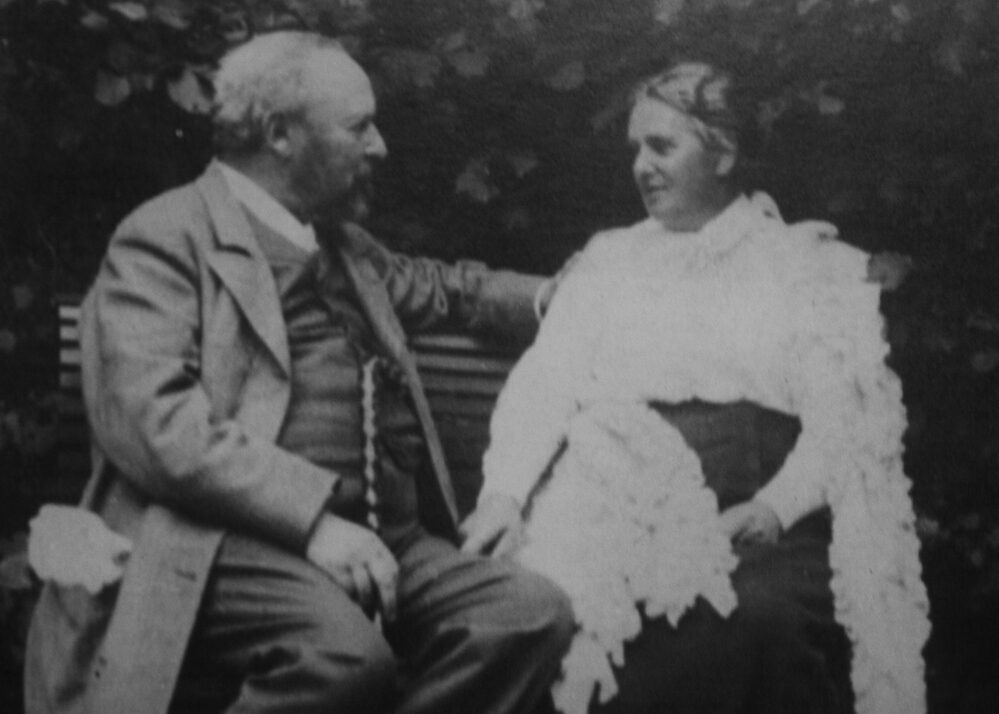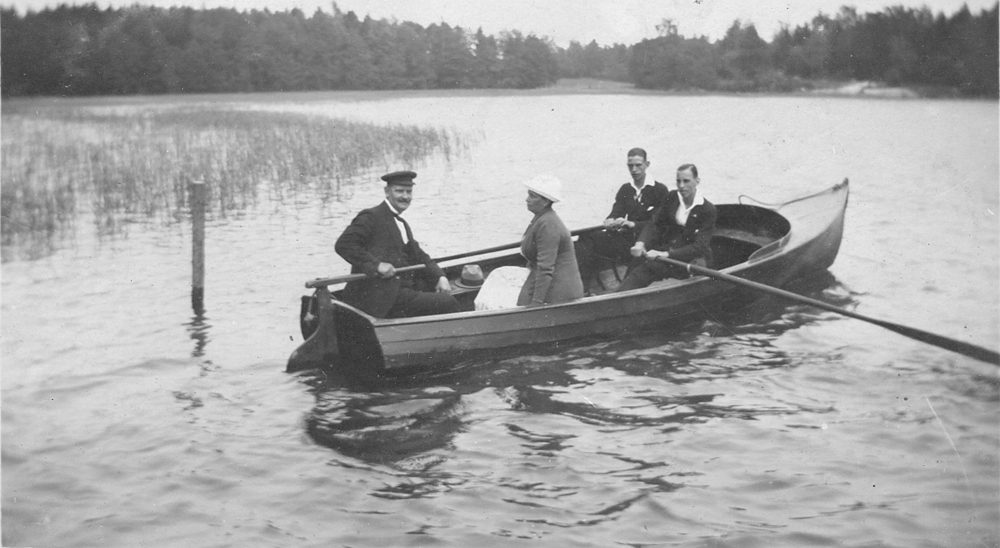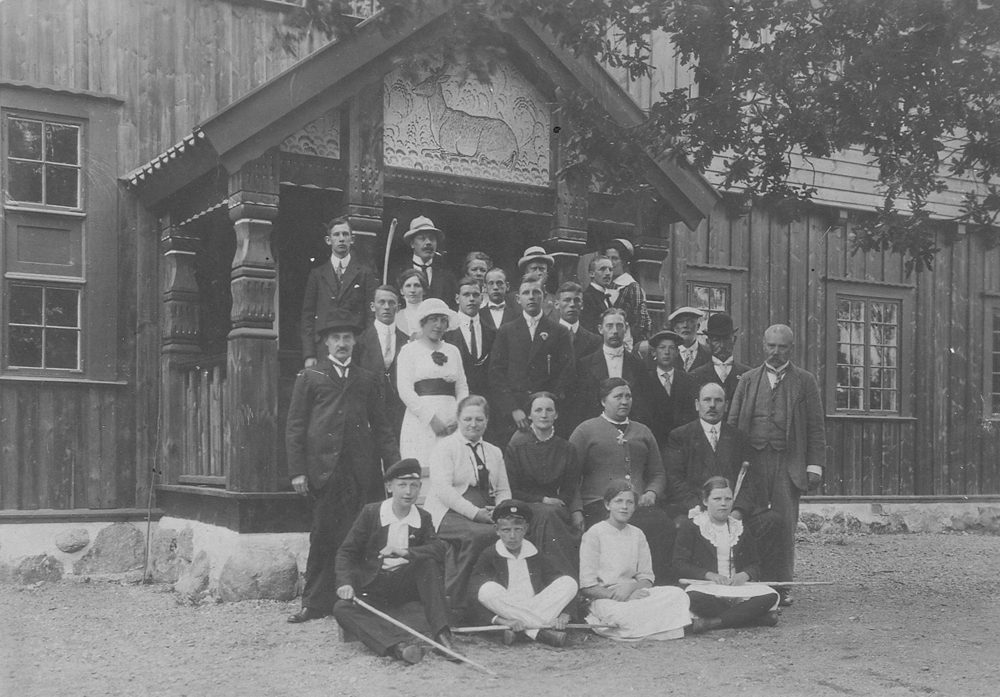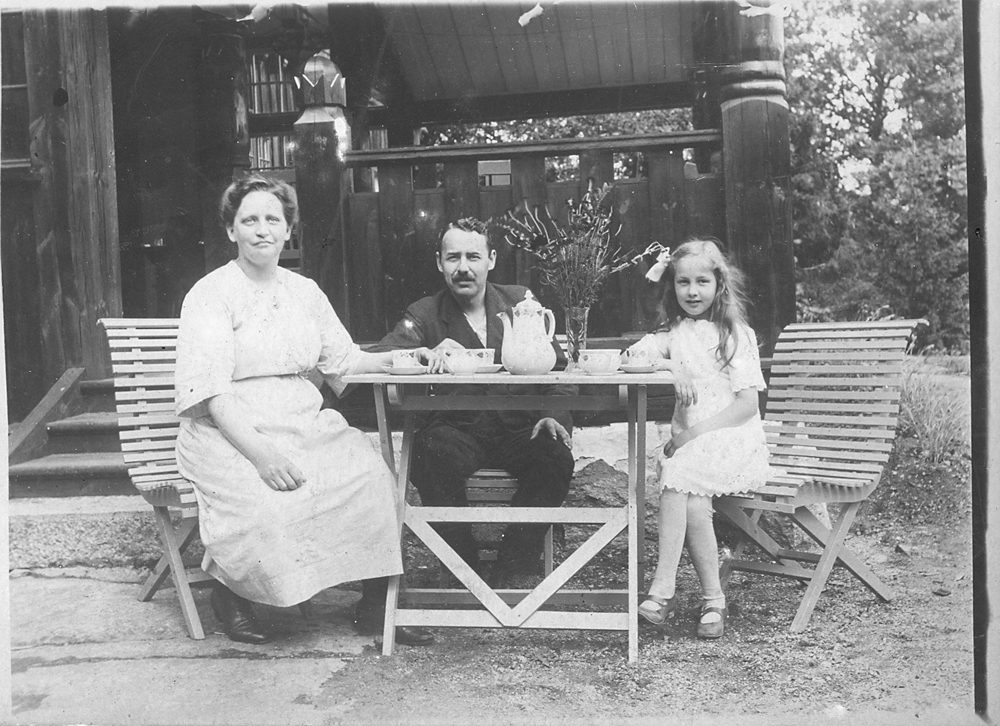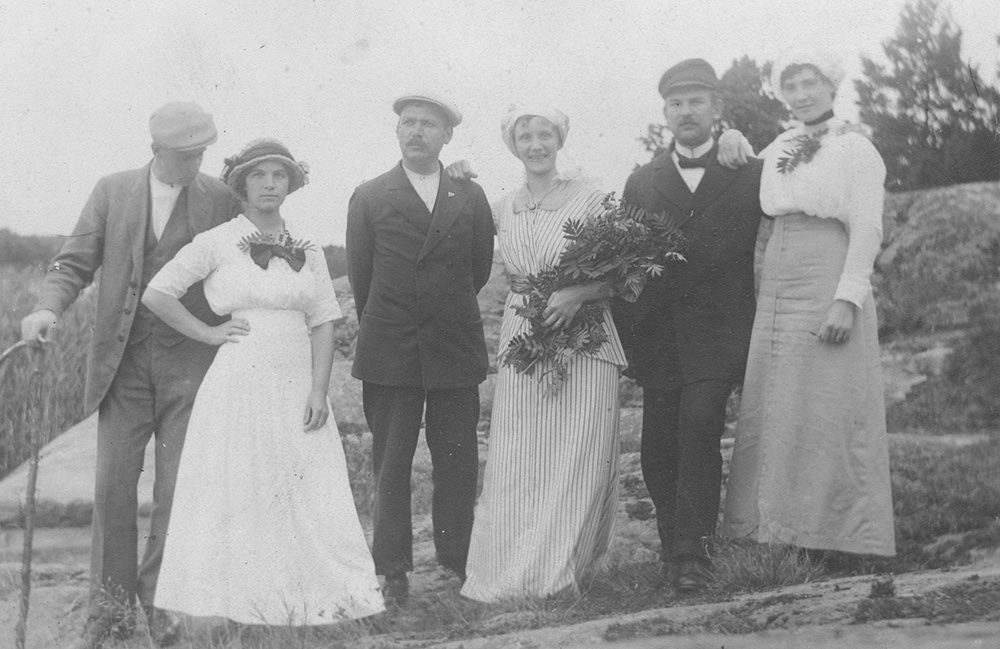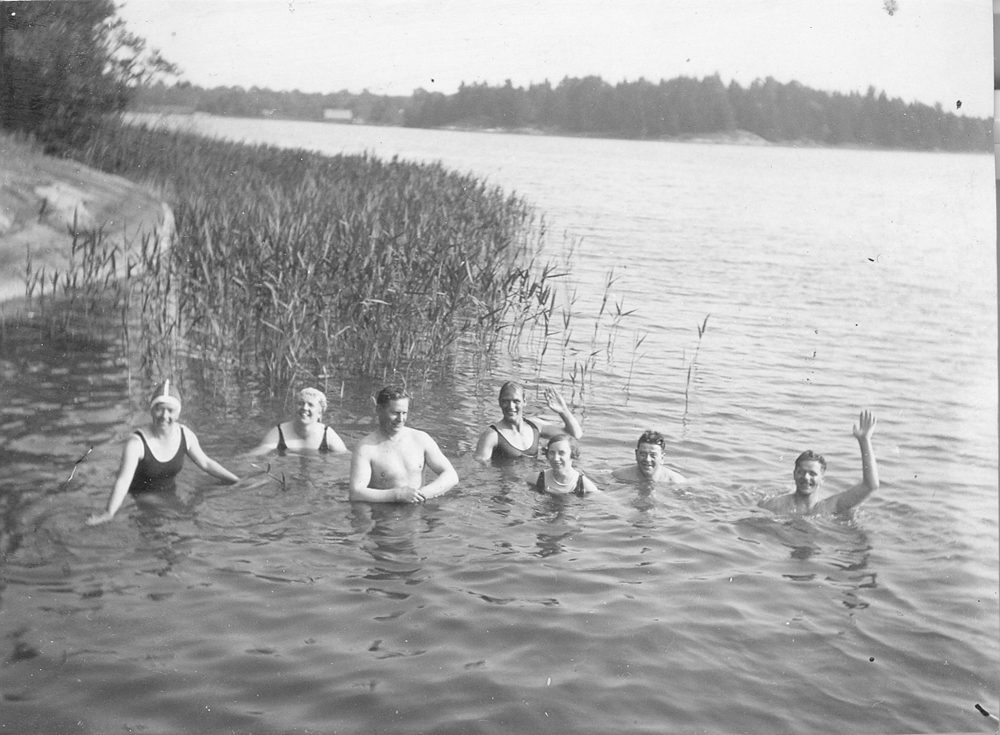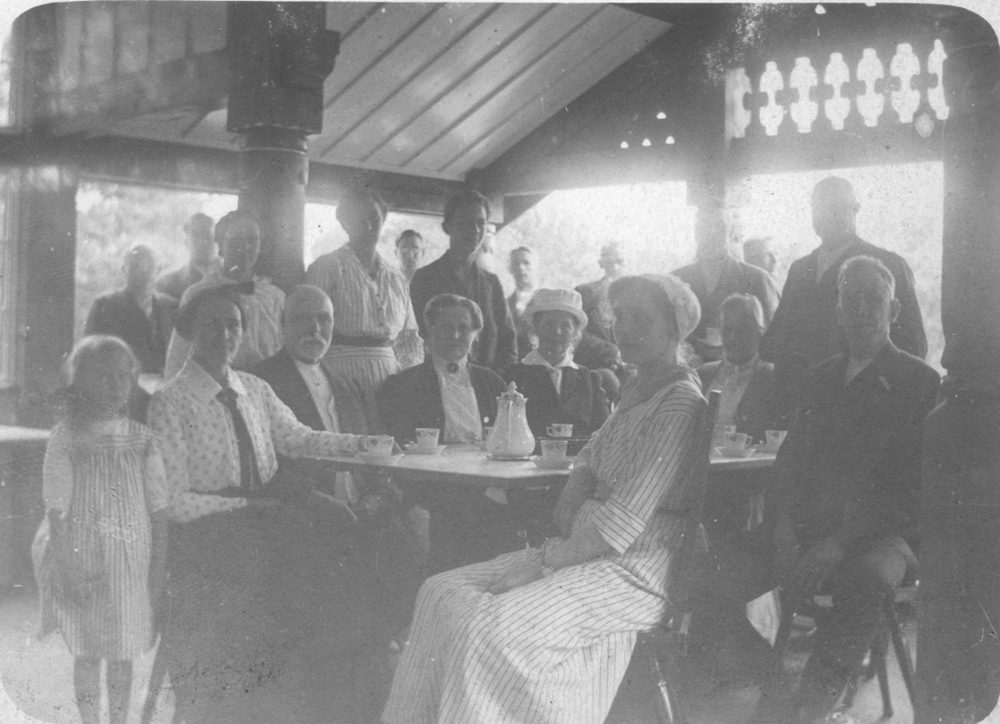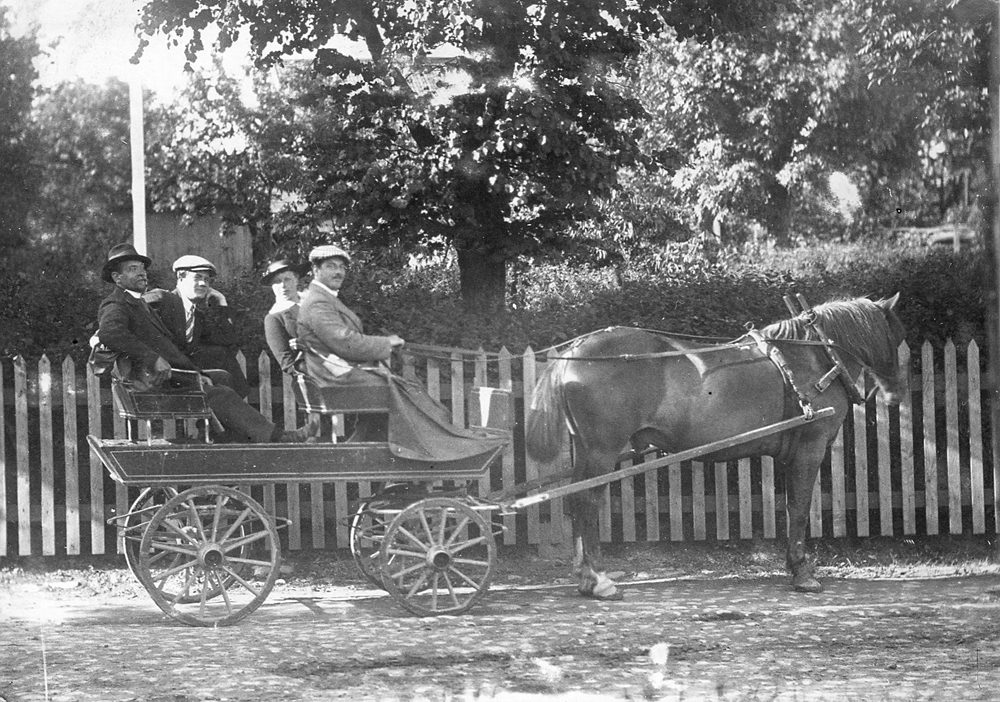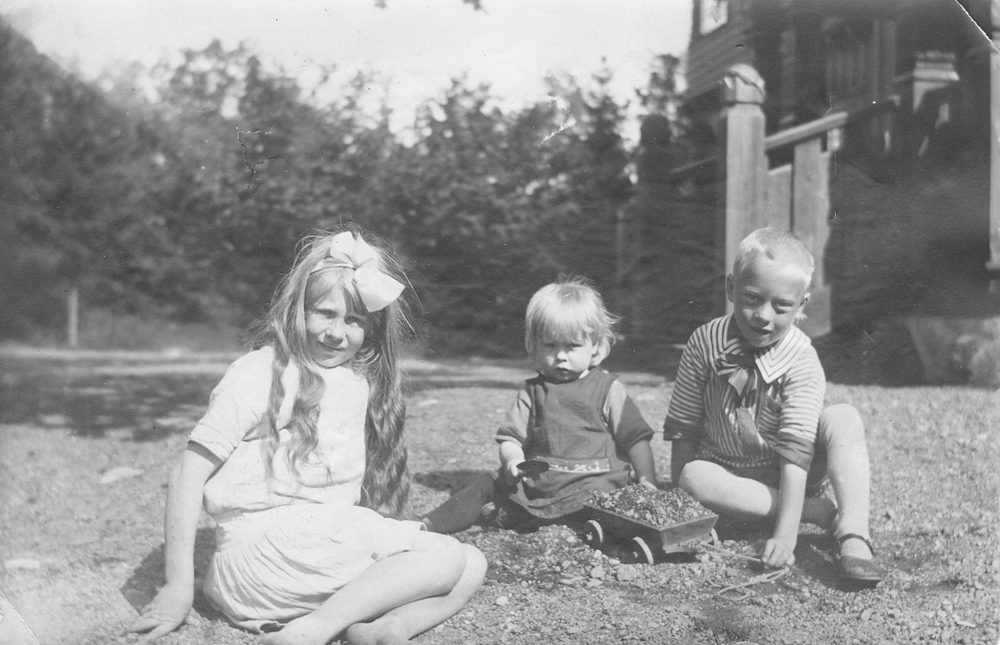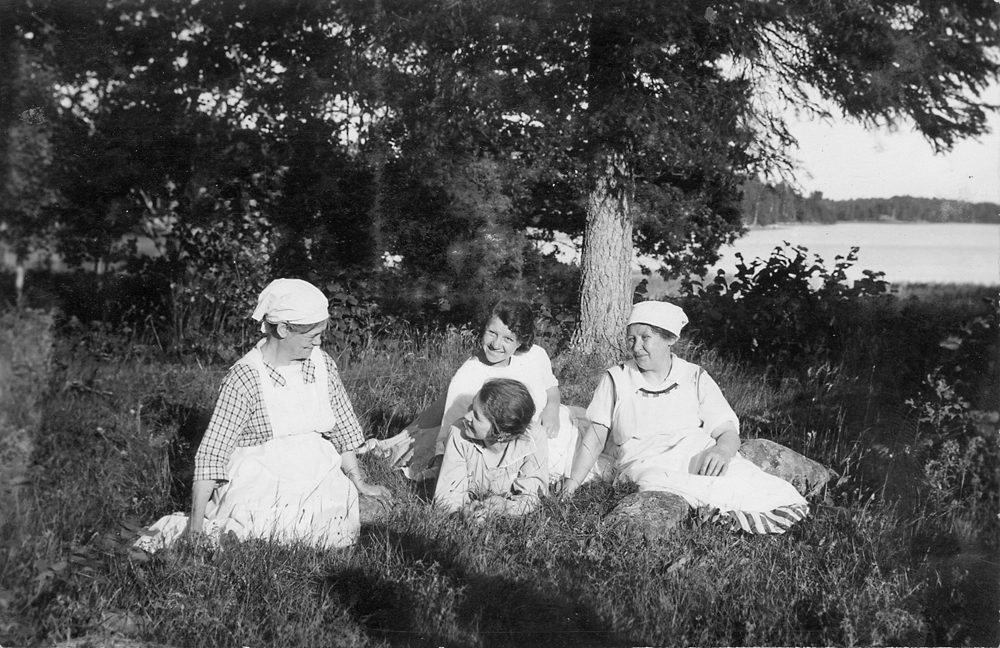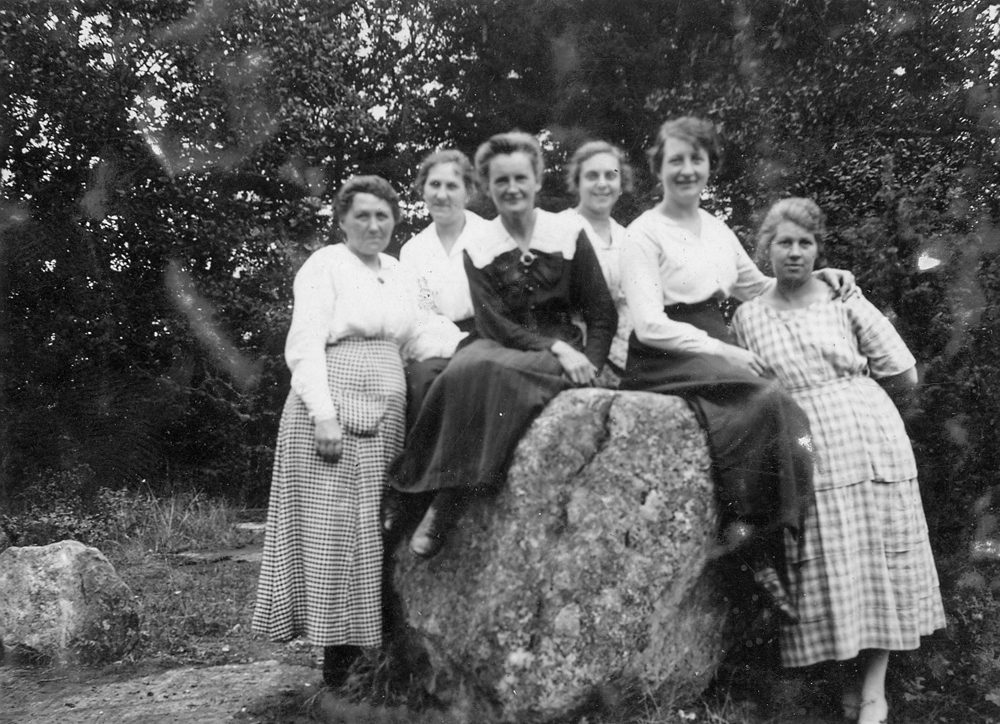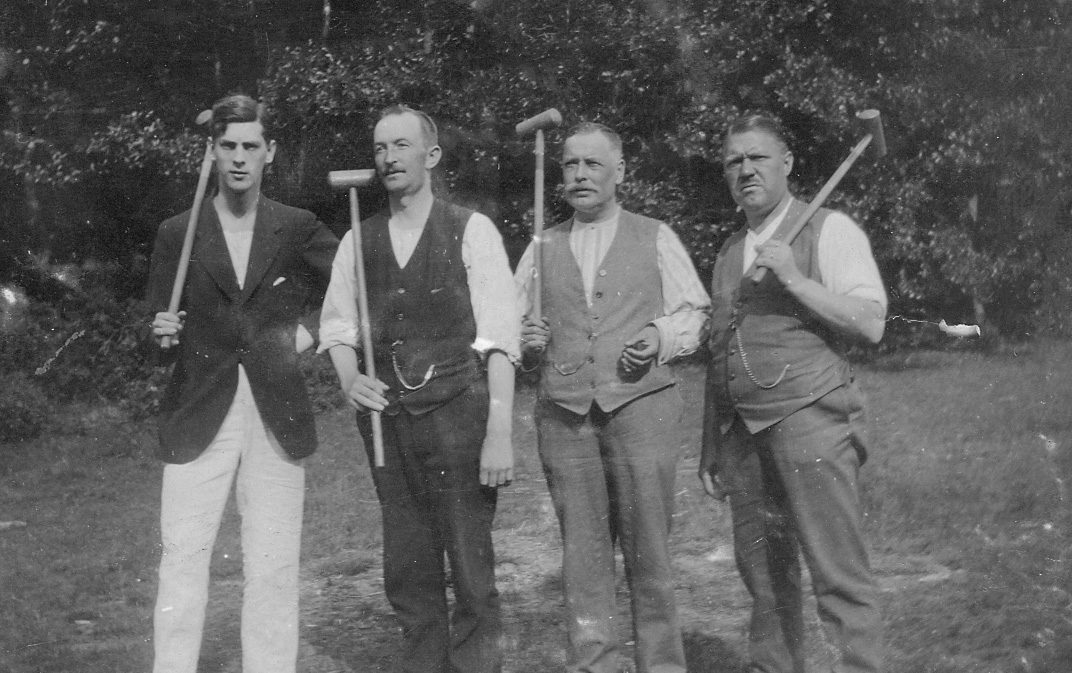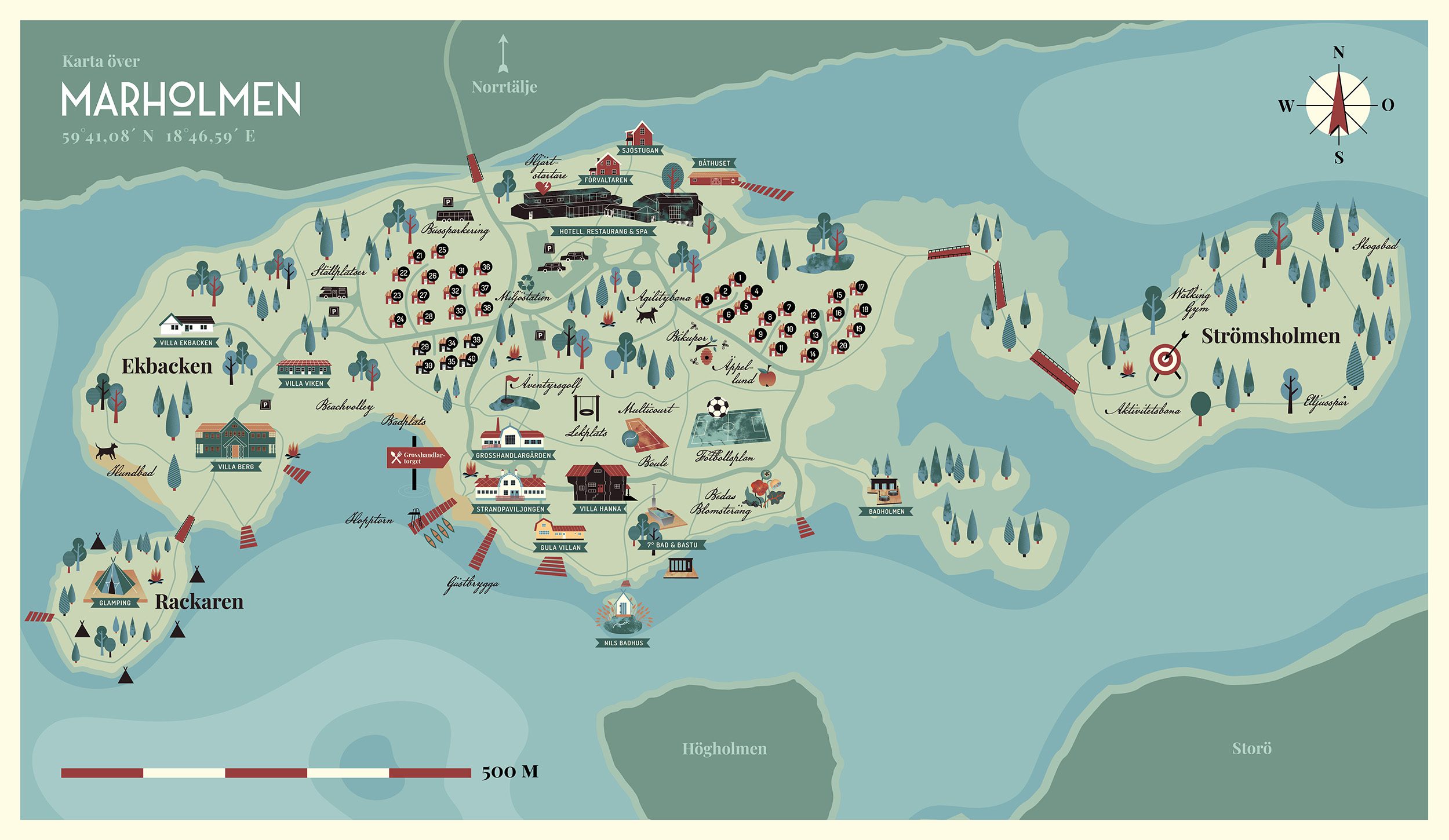History of Marholmen since 1900
Since the beginning of the 20th century, Marholmen has been a place where people rest, educate and enjoy themselves. All pictures were taken on Marholmen around the turn of the last century.
Watch the movie about the history of MarholmenThe history of Marholmen
Imagine a hundred years back in time. To 1917, when Selma Blomberg steps ashore on Marholmen.
She is 41 years old and a widow since her husband Herman died thirteen years ago. Her days consist of hard work at Rörstrand's porcelain factory for SEK 100 a month. This is enough to support herself and her two children. The small family lives in a room and kitchen on Helsingegatan in Stockholm. There is no central heating and no dry toilets in the yard.
Selma is a working class woman. Poor, hardworking and in failing health. She has never had a day off in her entire adult life. Until today, when she steps ashore on Marholmen. For two weeks she will stay here at the rest home. For free. She can hardly believe it's true. How is it even possible?
The answer lies four years in the past. It was then, in 1913, that wholesaler Nils Berg and his wife Hanna made a decision. They decided to donate their beloved island of Marholmen to the Swedish Trade Union Confederation LO and build a rest home for working-class women. Nils had managed to build a fortune and Hanna was committed to women's issues. The two had their working lives behind them and everything they could wish for. Why not do something meaningful and important with their money? No sooner said than done.
At the same time as Vilohemmet, Skogsstugan for working women is built. A year later, the Holiday Home for men and their families is completed. But Nils has more plans.
In 1924, two years after Hanna's death, Nils donates the rest of his fortune to Birkagården Folk High School in Stockholm. He wants to promote public education and especially "the public education needs of factory women". This gives birth to the next idea and in 1926 the Folkbildninghemmet opens on Marholmen. The same year, the first course for women takes place here.
Training and course activities are extended to the trade union movement. In 1937, the first trade union course is held, a weekly course for Transport members. And so it continues. Thousands upon thousands of union members enrich themselves with new knowledge in the courses. In 1983, the Kommunal trade union buys Marholmen. With 80% female members, it is Sweden's largest women's organization. What better heir to the work of Nils and Hanna?
Back to Selma. Together with thirteen other working women, she spends two weeks at Vilohemmet here on Marholmen. They swim, walk in the summer greenery, make excursions by land and sea, pick flowers, converse in the white garden chairs and everything that belongs to summer. On rainy days they sit inside and read or play cards or some other parlor game. In short, they rest.
By the end of the summer, a total of 52 women had attended Vilohemmet. The committee summarizes that "...most of the women have gained weight and regained health and strength, and the result thus corresponds to the purpose of the foundation."
For Selma, two weeks' leave was an unattainable dream. As a working-class woman, she had neither the economic nor the political conditions. It would be another five years before women got the right to vote in Sweden. A two-week holiday was only made legal in 1937.
It's easy to think "how tough it was for people back then". But the fact is that far from everyone can still afford a vacation. Nearly one in ten children in Sweden live in financial poverty. For many of these 186 000 children, going away on holiday, staying in a cottage or caravan is nothing more than what it was for Selma - a dream. Can we do something for them? Yes, we can.
Here at Marholmen , we continue to work towards a sustainable society in many ways. Among other things, by giving families who do not have the economic conditions the opportunity to come here and relax through our Family Time initiative. You can read more about our commitment here on our website.
And why? Because we can. And we want to. Just like Nils Berg and Hanna wanted to. Hanna died in 1922, Nils four years later. But their idea lives on. The story continues.

The wholesaler couple Nils & Hanna Bergs Marholmen
At the end of the 1880s, Nils Berg bought the Marholmen property, which had been split off from Solö farm. He built his first summer villa on Marholmen , which unfortunately burned down in the 1930s. At the beginning of this century, he built the so-called Finnvillan (today Villa Hanna), based on drawings by the highly recognized Åland architect Lars Sonck. It is the house in the picture above. At around the same time, he had a farmhouse built on the property, complete with the most modern technology of the time. A dormitory, with about twenty double rooms, was also built for the farm. The facility would be used as an agricultural school. What prompted him to invest capital and energy in such an idea is difficult to understand, as industrialism had begun its triumphal march in Sweden too. The investment in Marholmen would eventually prove to be a false speculation, which was probably unusual for that man.
In 1909, there was a major labor conflict in Sweden, a conflict that ended in defeat for the workers. The national organization lost about half of its members. They could not afford to pay the membership fees. Many working families were struggling.
In Stockholm at that time, the evening newspaper Aftonavisan was published, which the Bergs read and where the investigative journalist of the time, the editor Gerhard Magnusson, wrote articles about poverty and need, articles that often ended with a direct appeal for help. The Bergs read and were influenced. Nils Berg was a man of action. He proposed to Ersta Diakonianstalt to establish a rest home for workers' wives on Marholmen, but for unknown reasons Ersta turned down the offer.
Berg then turned to the Swedish Trade Union Confederation (LO), which was in dire financial straits after the disastrous labor dispute, and which accepted the proposal. The dormitory at the closed agricultural school was to become a summer home for tired working-class women.
The donation letter reads as follows: "Unemployment, resulting from the fluctuations of the labor market or due to the conflict between employers and workers, causes suffering and hardship not only to the unemployed worker himself, but also to his wife and children, who suffer undue hardship. Working-class wives, in particular, are subjected to severe trials at such times, which depress their courage and undermine their health, but even otherwise working-class women are often in urgent need of rest, which is not available to them.
In order to contribute to some extent to the remedy of the grievances concerned and at the same time to express the view that it is the duty of capital to take account of the victims of unemployment...we give the spouses the property mentioned below to the Bergska donation."
The Bergska donation thus consisted of the larger part of the Marholm homestead with a farmhouse, residential buildings and the first summer villa, together with a capital equivalent to about SEK 500,000, certainly a lot of money at the time. In addition, two years later, the so-called holiday home, which is now known as the Art Nouveau house, was added. The donation was handed over in November 1913 in the presence of LO chairman Herman Lindqvist and Hjalmar Branting, who were also present at the opening of the rest home in the hot summer of 1914. This donation was seen as something very important in the labour movement. A right-wing newspaper is said to have venomously opined that now the workers can strike as much as they like and in the meantime travel out to Marholmen and live sweetbread days.
Forgot their table companions
A few hectares of Marholmsvillan remained in Berg's ownership. What could be done with this remnant? In 1922, his wife Hanna died of a brain tumor. The summers spent together on Marholmen were over. Sometime in 1923, Berg met the headmaster of Birkagården Folk High School, Natanael Beskow, at a dinner. The two gentlemen had so much to talk about that they forgot their dinner companions. Rude, but good for the school. After further discussions, it was decided that the rest of Marholmen would be bequeathed to a fund called Marholmens Folkbildningshem. Here, Birkagården Folk High School would be able to hold summer courses for female students, mainly young women who worked in industry. The tobacco monopoly became a major supplier of students for the summer courses. "Tobacco plants" the girls were sometimes called. Old "tobacco plants" collected money in the 1960s to give the children of Marholmen two optimist small sailing boats, who were named Nicko and Tina.
Berg had a school building and a dormitory built in the national 1920s style, designed by Carl Alfred Danielsson-Bååk, the same architect who had previously designed the Semesterhemmet/Jugendhuset. Elsa Beskow, the well-known artist and storyteller, was Natanael's wife. She contributed with the color scheme on and in the houses. 400,000 was set aside for a support fund. !926 Marholmens Folkbildningshem was inaugurated, and the first summer course started with 21 girls, including 18 factory workers, two maids and a deputy hostess.
Berg had the right to stay in the villa as long as he wished. For the first two years, he could travel to Marholmen with a nurse. His illness had worsened. He was probably pleased to see so many young people on his old island, as he was unable to have any children of his own. In any case, he managed to realize his humanistic ideals on his own summer island. It had now been transformed into the "workers' islet" that his will spoke of. Nils Berg passed away in February 1928, aged 86. He was a man of honor in all his days. The wreath of flowers he traditionally wore on his portrait every Midsummer is certainly well deserved.
Here is an extract from the 1924 will:
"...in order to fulfill my and my wife's intentions with the Bergska donation to make Marholmen a "workers' island" and to meet the need for continued education in knowledge and skills, which - through the development of society and the increased responsibility imposed on citizens after expanded civil rights - appears in both male and female citizens and which especially the industrial working women should feel urgent, although they are prevented by economic reasons to satisfy this educational need ... I hereby decree as my last will and testament... that after my death, with the property specified below, a fund shall be established, to be known as the "Marholmen Folk Education Home", with regard to whose purpose, administration and audit the following provisions shall apply..."
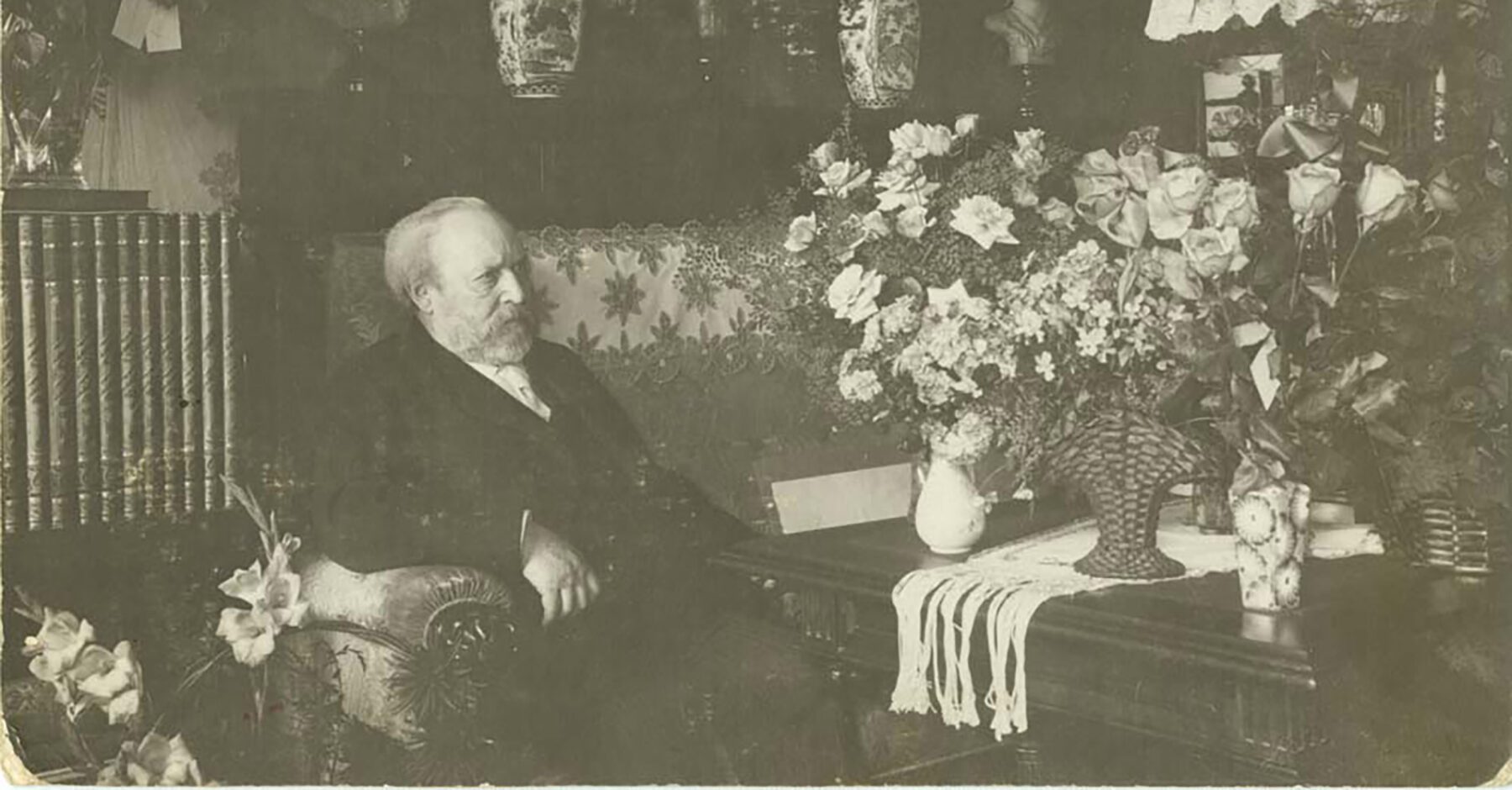
Nils Berg as a person
Nils Berg was a serious person. Had he always been? The question is impossible to answer. In the letters he wrote to his parents when he was away, there is no room for humor. He had attended the Private New Elementary School in 1853-59 - the school where Carl Jonas Love Almquist had previously been headmaster. The school was modern for its time and focused on modern languages, but required only a moderate knowledge of Latin. No doubt Berg was influenced by his teachers and peers. The future international merchant had "a" in Swedish, French and English, but only "ba" in German, which came to dominate the last three decades of the 19th century in Sweden and the Baltic countries. It is likely that he had had a bad German teacher, as many others have had.
In his youth, Nils Berg practiced in Germany and England to learn the languages properly. In letters to his mother, he expresses his disgust at the bigoted and godless spirit that prevailed in the parsonage in Richmond, where he was billeted. Prayers had to be said on the knees. This was an unsympathetic side of England. Another was almost the opposite. In a letter he characterizes the English as "a machine people, so practical that they cannot understand what cannot be expressed in figures".
He abhorred hypocrisy and artifice as well as cold materialism: His social attitude was formed during this time... In the dining room of the rest home he had the slogan "Honest man speaks the truth" hung up much later. Natanael Beskow's unapologetic radical Christianity must have made a deep impression on Berg.
He saw her through the window
In 1892, at the age of 50, he married Hanna Maury, twenty years his junior, who was then working at the Gumaelius advertising agency. The marriage took place in such a way that Berg went up to Hanna's employer, Miss Gumaelius, whom he had known for a long time. He said: "At the first table in the next room sits a lady who looks so nice and is always so diligent. I would like to get to know her."
Berg's office was across the street on the same floor. Miss Gumaelius brought the two together and this led to a thirty-year and - as far as we know - happy marriage. The beloved wife came to mean a great deal to Berg. Among other things, she was able to subdue his volatile temperament.
The right thing is the right thing
The story of the wrecked steamer suggests a sense of entitlement bordering on rigidity. Once, in the 1980s, Berg had bought a shipload of paints, which was going from London to St Petersburg. The steamer with the cargo sank in the North Sea. It was insured in St. Petersburg, but the insurance company, for some reason unknown to us, refused to pay the claim.
Angered, Berg traveled to St. Petersburg, where he bought the insurance company. He is said to have lost 250 000:- on the deal, but he got his insurance. Gillis Hammar, headmaster of Birkagårdens folkhögskola 1931 - 1952, has called Berg "Karl XII as a wholesaler".
Ignoring inflation
Sometime in the 1870s, Berg had been asked if he would like to sell some plots on Bastugatan in the south of Stockholm. Berg said yes and mentioned his price, which was considered too high. No deal was made. Ten years later, the same speculators came back and asked how much the plots now cost. Berg's reply was: "The offer I have made, I have made it!" Prices had indeed risen, but he stuck to his old offer.
No grogginess in holiday homes
There was a ban on alcohol in the LO homes - Berg had decided that. When some "old men" at the holiday home once sent a messenger to Berg in the villa and asked if he could lend them some whiskey, Berg snapped. "Don't you gentlemen know that it is forbidden to drink alcohol at the homes? If you would like a toddy, you are welcome to join me." So speaks the stern gentleman. The sayings "An honest man tells the truth" and "Whatever you do, do it right " were probably quite appropriate for this original wholesaler.
History of Marholmen
Follow marholmen.hotell for inspiration for your next trip.
For over a hundred years, Marholmen has been a place for people to rest, meet, swim, enjoy, be educated or explore. Now, just as then, our guests gather to enjoy the tranquillity of the island. Whether you're here for the first time or you've visited us many times, you're part of our history. 💛
Do you have a favorite memory from Marholmen? Share them with us in the comments! 👇
#marholmens_history

This summer, we are reinstating a historical tradition and will once again start weighing guests at check-in and check-out to ensure that their stay was good and restful.
In the early 1900s, all visitors to the rest home on Marholmen were weighed on arrival and departure. In the summer of 1917, the rest home committee summarized as follows: "The food has, despite the crisis, been to the greatest satisfaction and most guests have gained weight and regained health and strength"
"Offering our guests good food, rest and recovery is still the most important thing for us today and this will be an important step in being able to measure the results of that", says CEO Fredrik Utheim.
#marholmens_history

Over 100 years ago, Selma Blomberg came ashore here on Marholmen. Selma was a widow and worked hard to support her children. This was to be the first holiday of her life. Here, something as unique as two weeks' rest was offered to hard-working women - completely free of charge and long before we had statutory holidays in Sweden.
A few years earlier, wholesaler Nils Berg and his wife Hanna, who were both involved in women's issues, had chosen to donate parts of their island Marholmen to the Swedish Trade Union Confederation LO and build a rest home for working-class women.
Today, on International Women's Day, we are a little extra proud of our fine history and that Hanna's commitment to women's issues still lives on here on the island.❤️
marholmen #roslagen #visitroslagen #norrtälje #kvinnohistoria #internationellakvinnodagen #marholmens_historia

